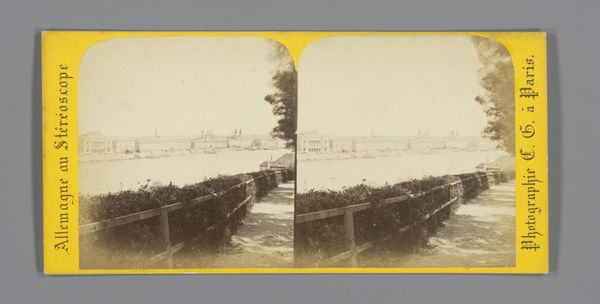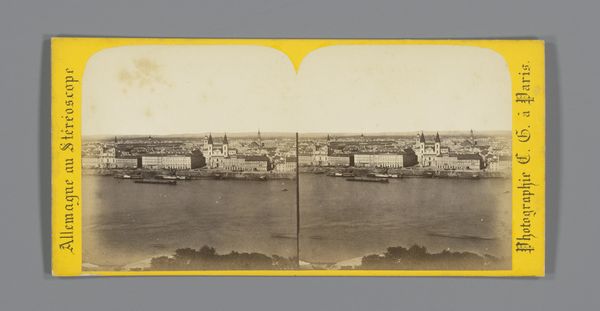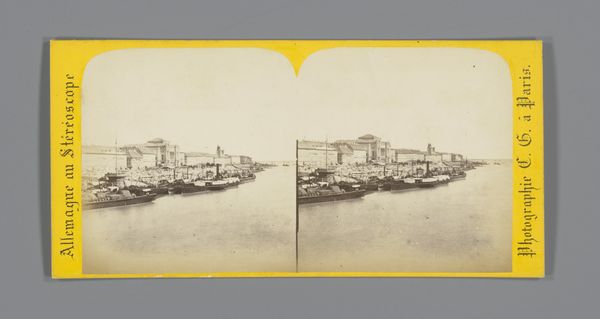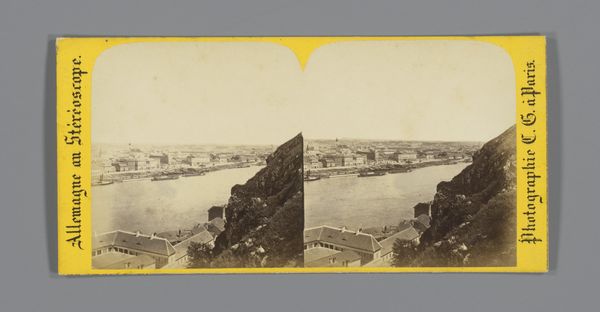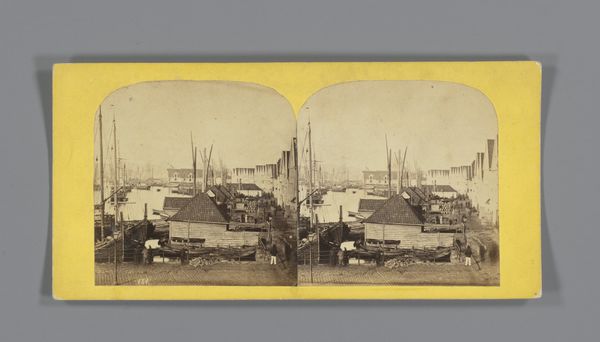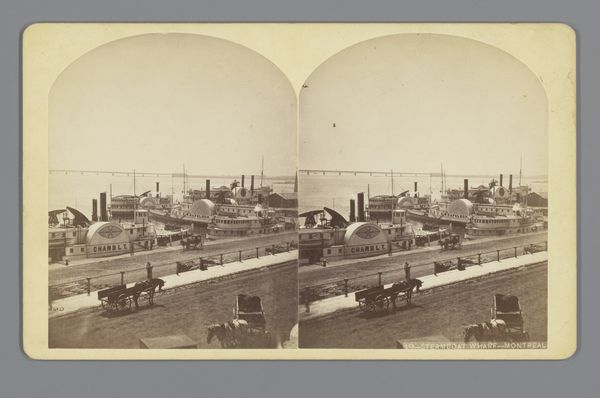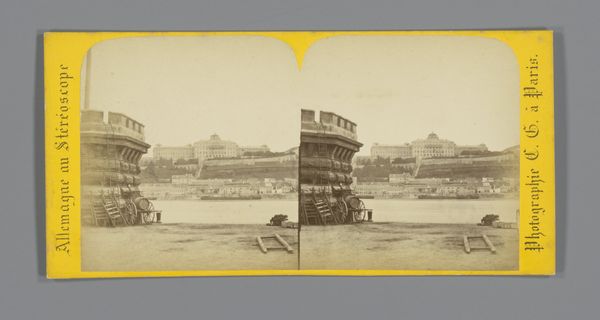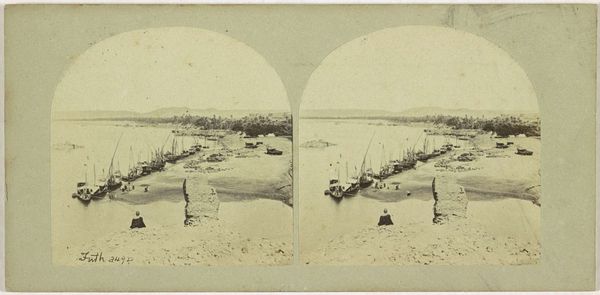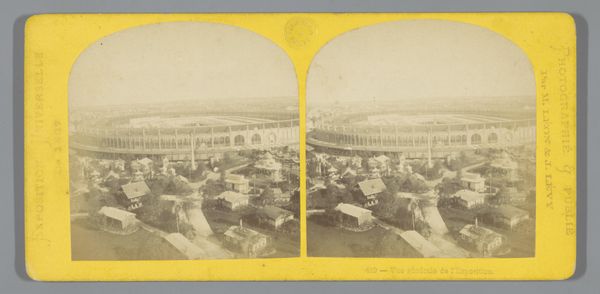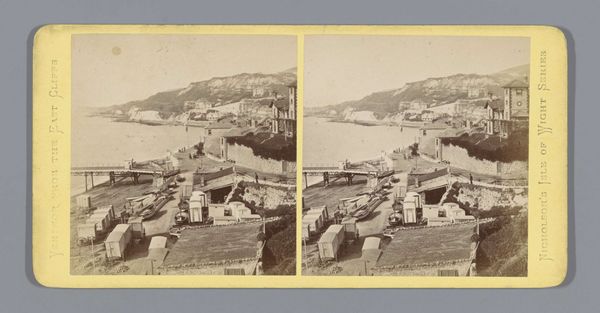
photography, albumen-print
#
photography
#
cityscape
#
albumen-print
#
realism
Dimensions: height 84 mm, width 175 mm
Copyright: Rijks Museum: Open Domain
Charles Gaudin made this stereoscopic photograph in the 19th century, using a camera and chemical processes to capture a view of Pest from Buda. Photography, even from its inception, had a complicated relationship to labor. On the one hand, it put portrait painters out of business, but on the other, it created a whole new industry of technicians, colorists and printing specialists. Here, two identical images printed side-by-side on card stock create a three-dimensional effect when viewed through a stereoscope. While seemingly effortless, the photograph’s sepia tones belie the labor involved in setting up the shot, developing the negative, and printing the final product. Gaudin has framed the image to emphasize the density of urban life in Pest, which in turn gives a feeling for the huge amount of construction labor that went into this landscape. The mass production of photographs like this democratized image-making, but also relied on the labor of countless anonymous workers behind the scenes. Considering the social and economic context enriches our understanding, and challenges the idea that photography is separate from craft.
Comments
No comments
Be the first to comment and join the conversation on the ultimate creative platform.

